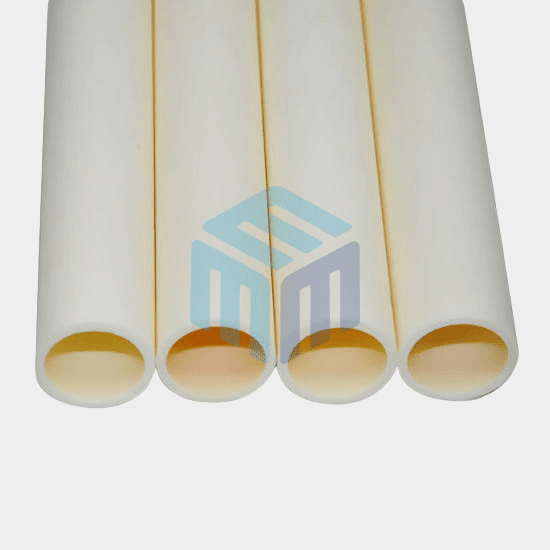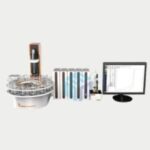Alumina tubes, made from high-purity aluminum oxide (Al₂O₃), are among the most widely used ceramic components in industrial and scientific applications. With their excellent thermal, electrical, and mechanical properties, alumina tubes provide reliable performance in demanding environments. In this blog, we’ll explore the properties, common uses, and essential maintenance tips to help you get the most out of alumina ceramic tubes. Trusted Alumina Tube Suppliers play a key role in delivering consistent quality for these high-performance applications.
Properties of Alumina Tubes:
Alumina tubes are known for their outstanding combination of thermal, mechanical, and chemical stability. These properties make them ideal for use in high-stress, high-temperature industrial environments.
High Temperature Resistance:
Alumina tubes can withstand high temperatures, typically up to 1700°C (3092°F) or higher depending on the grade of alumina used. This makes them suitable for thermal processes such as heating, sintering, and annealing. For reliable sourcing, consider reputable Alumina Tube Suppliers in India to ensure quality and timely delivery.
Chemical Inertness:
Alumina is chemically inert and resistant to most acids, alkalis, and corrosive substances. Alumina tubes are therefore used in environments where chemical resistance is crucial, such as in laboratories, chemical plants, and semiconductor manufacturing.
Electrical Insulation:
Alumina is an excellent electrical insulator, making alumina tubes suitable for applications involving high-voltage equipment, electrical insulation, and semiconductor processing.
Mechanical Strength:
Alumina tubes exhibit high mechanical strength and hardness, providing resistance to mechanical wear, abrasion, and impact. This property contributes to their durability and longevity.
Thermal Conductivity:
While alumina is not as thermally conductive as metals, it still has moderate thermal conductivity. This property allows for efficient heat transfer in thermal processes while maintaining thermal insulation.
Low Thermal Expansion:
Alumina has a low coefficient of thermal expansion, meaning alumina tubes experience minimal dimensional changes with temperature fluctuations. This property helps prevent thermal stress-induced cracking.
Uses of Alumina Tubes:
Alumina tubes are widely used across industries due to their ability to withstand extreme temperatures and corrosive environments. Their versatility makes them essential in thermal, electrical, and chemical applications.
Furnace Tubes:
Alumina tubes are commonly used as furnace tubes in high-temperature furnaces for heat treatment, sintering, and thermal processing of materials such as metals, ceramics, and composites.
Thermocouple Protection Tubes:
Alumina tubes are used to protect thermocouples in industrial processes where temperature measurement is critical. The high-temperature resistance and thermal insulation properties of alumina help maintain accurate temperature readings.
Semiconductor Processing:
Alumina tubes are utilized in semiconductor manufacturing processes for components such as diffusion tubes, wafer boats, and insulating sleeves. They provide electrical insulation and withstand the harsh conditions of semiconductor fabrication.
Chemical Industry:
Alumina tubes find applications in the chemical industry for handling corrosive chemicals, acids, and alkalis. They are used as reaction vessels, sample tubes, and liners in chemical processing equipment.
Laboratory Equipment:
Alumina tubes are used in laboratory settings for various applications, including thermal analysis, sample containment, and experimental setups requiring high-temperature resistance and chemical inertness.
Maintenance Tips for Alumina Tubes:
To ensure optimal performance, clean alumina tubes regularly with compatible agents to remove residues and contaminants. Handle them carefully, avoid thermal shock by gradual heating/cooling, and inspect for cracks or wear. Store in a clean, dry environment using protective packaging to prevent damage and moisture absorption.
Cleaning:
Regularly clean alumina tubes to remove deposits, residues, and contaminants that can affect their performance. Use appropriate cleaning agents compatible with alumina.
Avoid Thermal Shock:
Alumina tubes should be gradually heated or cooled to avoid thermal shock, which can lead to cracking. Use proper heating and cooling rates in thermal processes.
Handle with Care:
Handle alumina tubes carefully to prevent mechanical damage. Avoid dropping or impacting the tubes, especially at elevated temperatures.
Inspect for Damage:
Periodically inspect alumina tubes for signs of damage, such as cracks, chips, or wear. Replace damaged tubes to ensure continued performance and safety.
Storage:
Store alumina tubes in a clean and dry environment to prevent contamination and moisture absorption. Use protective packaging or racks to avoid physical damage during storage.
Learn More About Alumina Tubes: How to use Alumina Tubes at high temperature for long-term use?
Conclusion:
Alumina tubes offer an exceptional combination of strength, heat resistance, and chemical stability, making them a go-to solution for demanding industrial and scientific applications. Alumina furnace tubes, in particular, are widely valued for their ability to withstand extreme temperatures in thermal processing environments. By understanding their key properties, practical uses, and proper maintenance practices, users can ensure long-lasting performance and reliability. Choosing high-quality products from trusted alumina ceramic tube suppliers and alumina tube suppliers is essential to maximizing value and ensuring consistent results in any application.
M-Kube Enterprise is an Indian company catering customized laboratory products, laboratory consumables, and laboratory solutions in India, Australia, New Zealand, Singapore, Malaysia, South Korea, Dubai, Philippines, Indonesia, and Vietnam.





